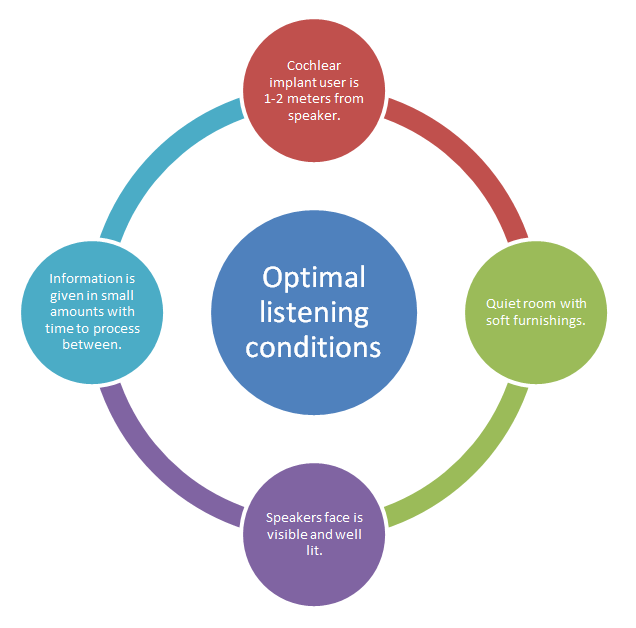As we mentioned in ‘How A Cochlear Implant works‘ – hearing through a cochlear implant is completely different from normal hearing. As a result the brain is given much less information to interpret and the user will have to work very hard to hear.
Helping Everyone!
Improving the listening conditions in the classroom will improve the learning and retention of information for all the class, it will help improve a pupil’s behaviour and reduce teacher absences (NDCS, creating good listening conditions for learning and education, 2016).
So what are the optimal listening conditions for an implant user?

Cochlear implant users benefit a lot from the implant, especially when there is just one speaker (within 1 to 2m) in a quiet environment. However, when the listening situation becomes more challenging such as when the speaker is further away, if there is any competing background noise or a loss of supporting visual information, then the already limited signal becomes significantly reduced. A cochlear implant user may also get tired more quickly with the high amount of effort needed to concentrate.
When the listening environment is not ideal this could affect the implant user’s:
- Communication skills
- Peer Relationships
- Confidence in communicating
- Tiredness/concentration levels

Key concepts
- What are optimal conditions for listening with a cochlear implant?
- What are the challenges of listening with an implant?
- What are the main factors which can affect the sound quality in a room or classroom?
- What can we do to help attending and listening?
